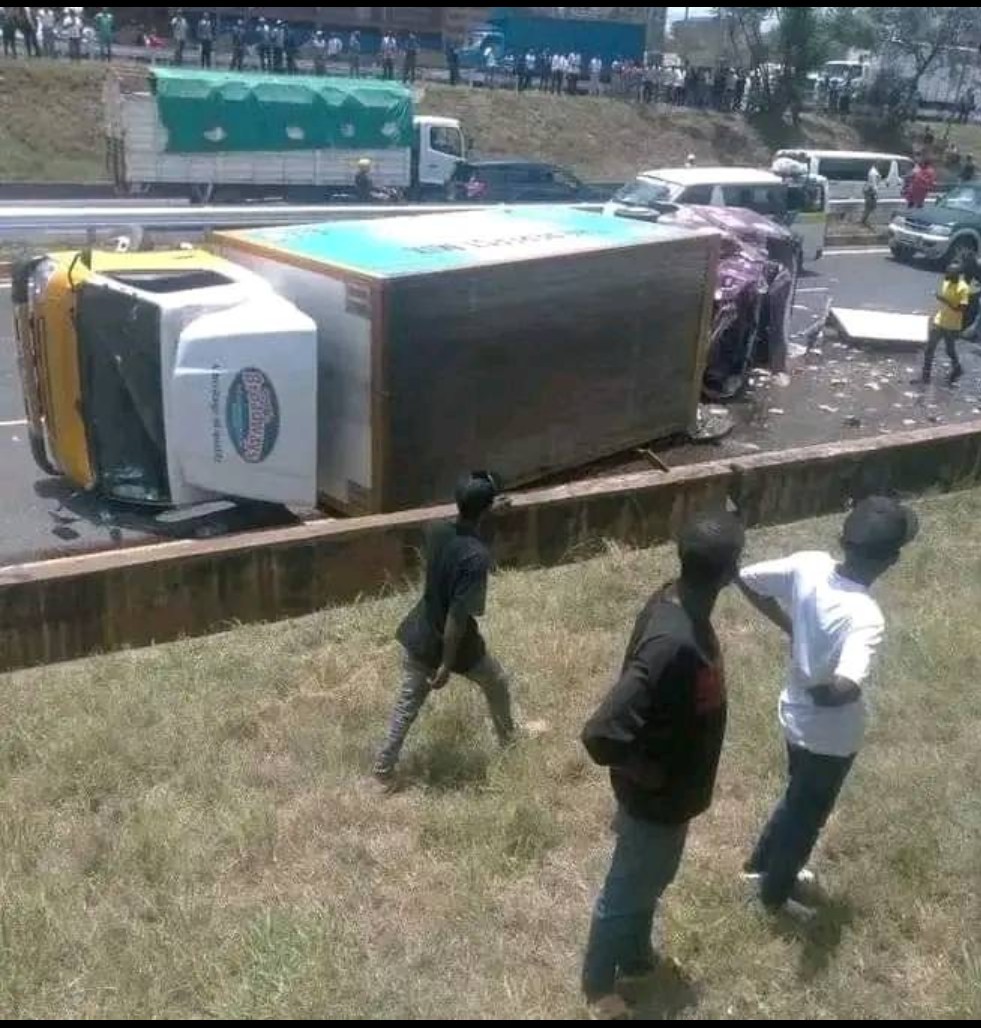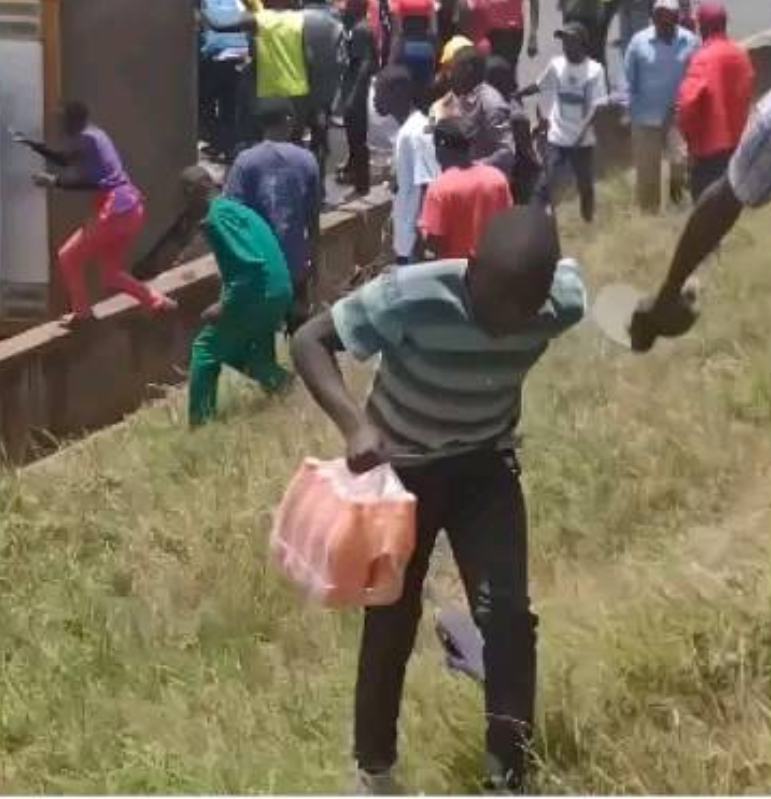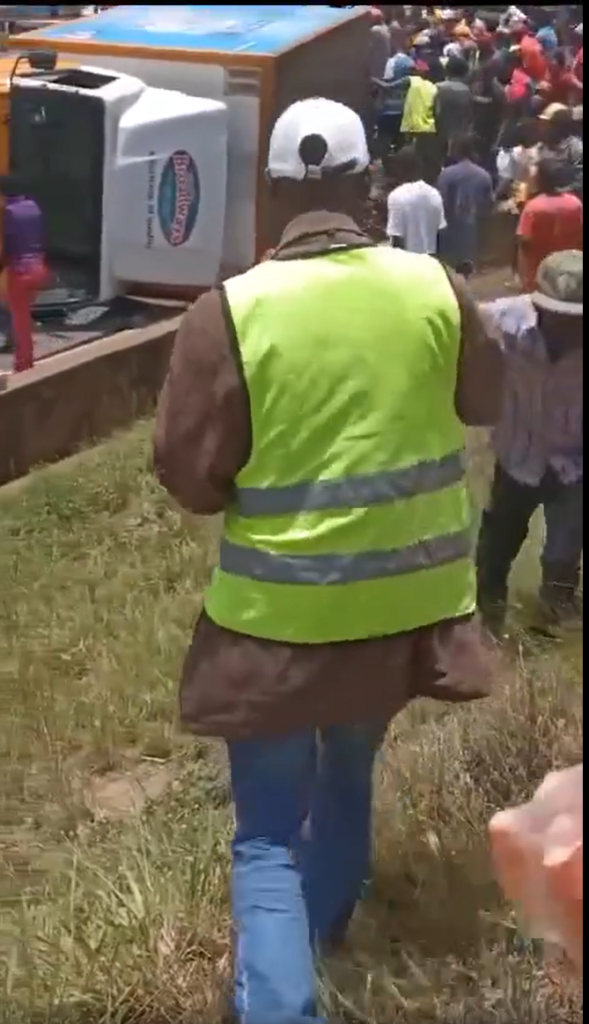

In a striking display of desperation, residents of Juja, Kenya, were recently photographed scrambling for bread and juice along Thika Road following a collision involving two lorries—one carrying bread, the other juice. The scene is a vivid tableau of the plight faced by many Kenyans, a snapshot that captures more than just an isolated incident—it encapsulates a narrative of poverty and the struggle for resources in a land where plenty seems paradoxically out of reach for too many.
Kenya’s Silent Struggle with Poverty
The struggle witnessed on Thika Road is an everyday reality for a significant portion of Kenya’s population. With a substantial number of Kenyans living below the international poverty line, the fight for basic necessities is a grim battle against an unforgiving tide of economic hardship. The images reflect more than an opportunistic grab for free goods; they reflect a society grappling with economic disparity and the urgent hunger that comes with it.

A Reflection of Food Insecurity
The scramble for bread and juice is emblematic of the food insecurity that plagues Kenya. This is not simply about hunger but the ripple effect it has on public health, educational attainment, and the economic potential of individuals and communities alike. The residents of Juja, like many others across the country, often contend with the uncertainty of where their next meal will come from—a stark reminder of the pervasive impact of food scarcity.
What does one see in the faces of those scrambling for food? Is it mere chaos? Or is it the instinctive human response to survive, to provide, to seize upon the slightest chance at sustenance? This incident, while unfortunate, also brings to light the communal spirit that arises in moments of crisis. It is a dual-edged sword: the despair that drives the scramble, and the solidarity it fosters among those in shared circumstances.
This raises questions about the role of the Kenyan government and the efficacy of policies intended to mitigate such levels of need. What systems are in place to address these socioeconomic disparities, and how can they be improved? Infrastructure, effective social safety nets, and equitable economic policies are not just idealistic goals; they are necessities for the prevention of such incidents of desperation.
One cannot help but reflect on the broader implications of such an event. It is a call to action for all stakeholders—government, private sector, and civil society—to recommit to the fight against poverty. We must advocate for a future where no Kenyan has to risk life and limb on the aftermath of an accident to feed their family. It is time for concerted efforts to create lasting change, to transition from scarcity amidst abundance to a future where prosperity is shared and sustenance is assured for all.
Right: People scrambling for bread and juice along Thika Road


